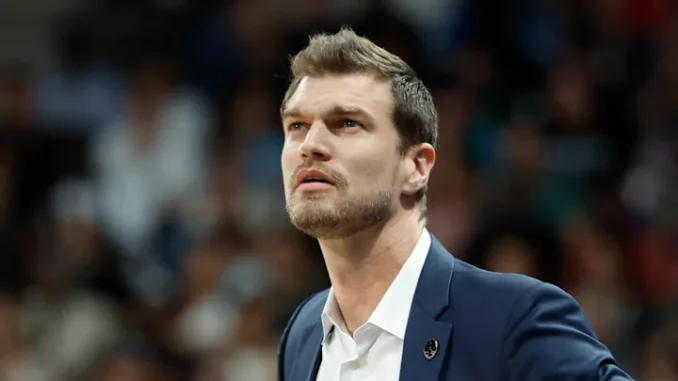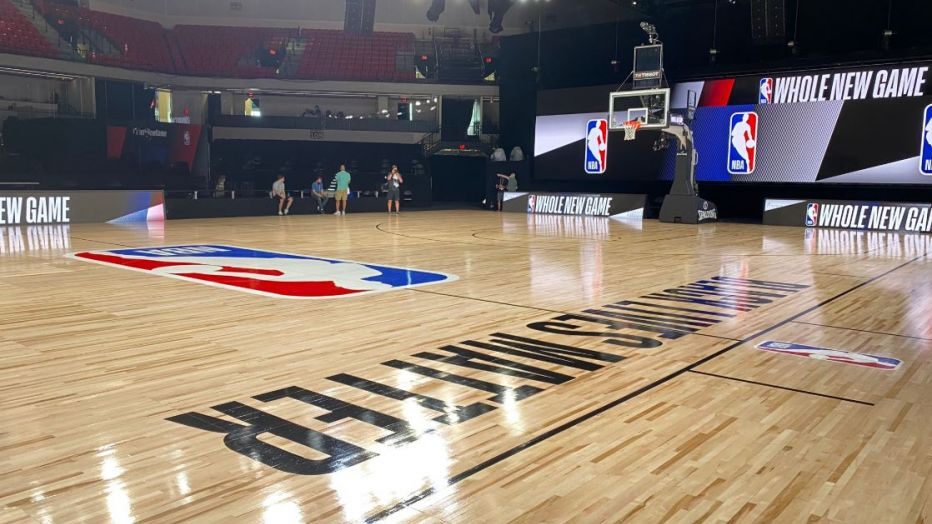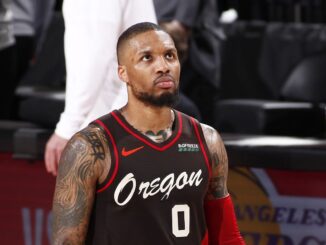
Editor’s Note – This column was submitted after the Portland Trail Blazers’ victory over the Utah Jazz last night.
When an organization builds its identity around instruction and steady progress, a sudden coaching interruption becomes more than a personnel story — it becomes a stress test of design. Chauncey Billups’ arrest in late October and the team’s decision to place him on immediate leave thrust Tiago Splitter into the head-coaching seat during a fragile rebuild.
The immediate question isn’t personality or public relations. It’s whether Portland’s player-first architecture — deliberate minutes, tailored development plans, and a teaching staff meant to outlast any single coach — can survive a pause in top-line leadership.
The Blazers’ 114–107 loss to the Los Angeles Clippers offered a first look at that strain. The game exposed recurring frictions: late-game offensive stagnation, defensive rotation lapses on Kawhi Leonard drives, and uneven pick-and-roll chemistry that left Scoot Henderson settling for contested pull-ups instead of finishing at the rim. Those aren’t fatal flaws, but they are the kinds of development moments a player-first rebuild can’t afford to lose.
Splitter’s Brief — and Why It Matters
Tiago Splitter is an unusual interim hire. He brings a player’s pedigree, Spurs-style teaching influences, and a temperament that leans instructor over showman. That matters because the job isn’t to reinvent a system on the fly — it’s to preserve developmental pathways, reduce role variance, and restore clarity for young players.
Interim coaches rarely get the runway to remake culture or take long-term risks. They’re expected to deliver immediate stability under scrutiny. For Portland, that means Splitter must show quick, measurable gains in a few key areas: tighter turnover control for Henderson, clearer role definitions for Shaedon Sharpe, and improved defensive communication to prevent isolation breakdowns.
Players in the Balance
Scoot Henderson is the clearest test of the rebuild’s fragility. His developmental arc has been deliberate — measured increases in usage, focused finishing reps, and gradual expansion of playmaking duties. His gains appear in the “messy minutes,” when rushed decisions evolve into reads that reward spacing. Disrupt that cadence and the margin for error widens. It showed against the Clippers, when mid-range pull-ups replaced confident rim finishes.
Shaedon Sharpe sits in a different spot. His new multi-year extension signals organizational belief in his growth as a secondary creator. Sharpe thrives when his shot selection is defined and his minutes predictable. A structured interim system could help him by creating cleaner shot profiles and limiting low-efficiency isolation plays. The risk: too much structure could dull his creative instincts and stall progress.
Frontcourt clarity is also on the line. Robert Williams III and the Blazers’ other bigs need consistent pick-and-roll roles that balance rim protection and roll finishing. Splitter, who excelled at positional discipline as a player, should be able to reinforce timing and help-side principles that cut down on free drives. Better interior defense means easier transition looks and less pressure on young guards to manufacture offense.
The Tactical Test: Fixes on Tape and in Practice
The Clippers game highlighted fixable issues Splitter can address immediately:
1. Finish-zone urgency. Too many late-clock possessions ended in contested threes. That’s a practice issue. The fix: teach late-clock reads, script two-option finishes, and drill decision trees that favor rim attempts for Henderson. Focused film and walk-throughs simulating fatigue can tighten execution fast.
2. Pick-and-roll clarity. The film showed miscommunication and inconsistent coverage discipline. The remedy is repetition — live ball-screen drills with clear help-side slides and mirrored guard-big reads until responses become automatic.
3. Reduced cognitive load. Simplify game plans so practice themes transfer. If Henderson is juggling new terminology every week, progress stalls. Splitter must emphasize clarity: one focus per practice, concise language, minute-by-minute structure. Those choices separate an interim who stabilizes from one who treads water.
Integration with Front Office Levers
Coaching fixes alone aren’t enough. The front office must align its decisions with Splitter’s developmental timeline. If progress shows in key metrics, Portland should avoid knee-jerk roster moves that disrupt continuity. If regression continues — turnover rate, true shooting, or rim-attempt metrics — management may need to act: targeted veteran minutes, short-term signings, or trades that clarify roles.
Timing matters. The early-season stretch is the high-leverage period for defining identity. By midseason, narratives harden and teams are tougher to redirect. That makes Splitter’s first six to eight weeks critical. If he can steady the team’s developmental ledger in that window, the rebuild stays intact. If not, the pause becomes a pivot.
Measuring Success
Several measurable thresholds will show whether Splitter preserves the rebuild:
- Henderson’s turnover rate: A drop of about two percentage points across six games would suggest better decision pathways.
- Sharpe’s catch-and-shoot efficiency: A three-to-four-point rise in effective field-goal percentage would indicate cleaner, repeatable looks.
- Team defense: A three-to-four-point improvement in defensive rating and roughly two fewer opponent rim attempts per game would show Splitter’s teaching taking hold.
Narrative signals matter, too. Look for practice quotes where players reference specific corrections and consistent coaching language around drills. Those details reveal process alignment — the real marker of a functioning developmental culture.
Conclusion
This interim stretch raises a deeper question for Portland: what exactly is being rebuilt? A player-first philosophy claims that progress outlasts coaching turnover — that the true continuity lies in habits and language, not names on a clipboard. Splitter’s tenure becomes the proof of that claim.
If the Blazers maintain cohesion and incremental growth under a new voice, they can credibly argue that their rebuild is built on process, not personality. If that thread frays, they’ll face a familiar crossroads: chase short-term chemistry or recommit to long-term culture.
For now, the watchlist is defined by nuance — signals, communication, buy-in, and tempo. Whether Splitter becomes a stabilizer who keeps the rebuild on track or merely a placeholder will reveal what kind of foundation Portland is truly building. The player-first promise only holds weight if it survives disruption, and the proof will emerge not in soundbites, but in the quiet grind of film rooms and practice courts.



